openSUSE Leap 16 has finally arrived—packed with a bunch of new features and improvements. So, many Leap 15 users are already itching to make the jump to this latest stable release. If that’s you, you’re in the right place.
While the upgrade process is relatively straightforward, it’s always best to do it the safe way—following the proper steps in the correct order with the right guidance. And that’s precisely the purpose of this article.
I’ll walk you through the process of upgrading from openSUSE Leap 15.6 to Leap 16, covering all key points. For most cases, the entire process typically takes between 30 and 60 minutes. Needless to say, everything you’ll see below has been tested and proven to work. So, let’s do it.
Step 1: Take System Backup
Although it is optional, this step is highly recommended. Take a system snapshot before proceeding. If you’re running the default Btrfs file system in Leap, the recommended way to create snapshots is with the Snapper tool. Check out here to learn how to use it. This way, if something goes wrong, you can restore your system to its previous state.
Step 2: Update All Software
Ensure you have a fully updated Leap 15.6 system. Run the three commands below to ensure no packages are waiting to be updated. If there are, apply them (and reboot if necessary) before moving on.
sudo zypper ref
sudo zypper upCode language: Bash (bash)Here is our fully updated openSUSE Leap 15.6 system before upgrading to Leap 16.
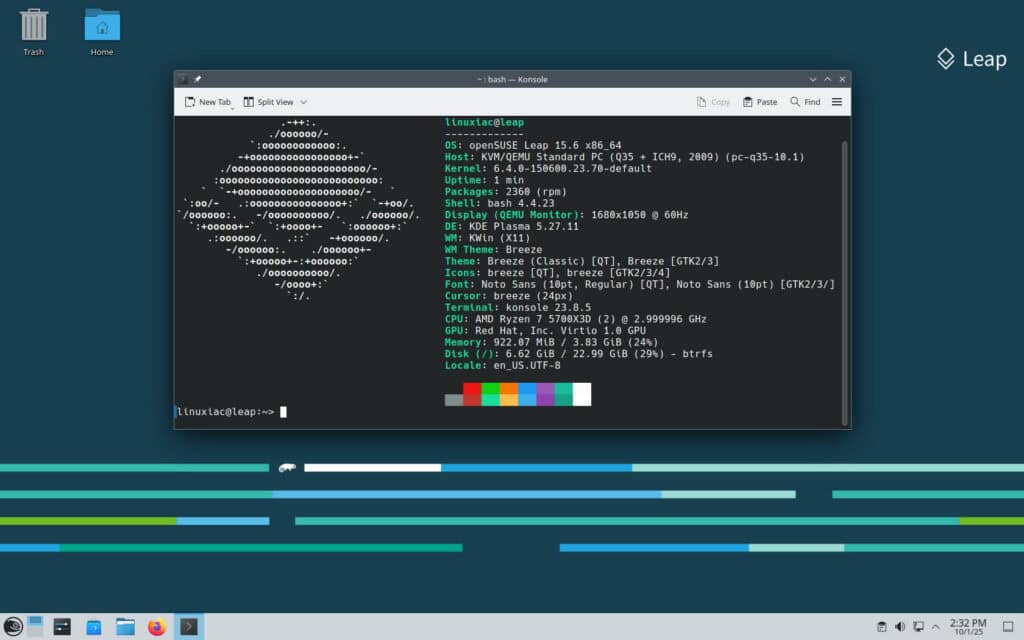
Step 3: Install the openSUSE Migration Tool
The openSUSE Migration Tool is a command-line utility (still marked as experimental) that helps users upgrade or switch between different openSUSE variants, such as Leap, Tumbleweed, Slowroll, or even to SUSE Linux Enterprise. Since it’s officially recommended by openSUSE, we’ll be using it for our upgrade. But what exactly does it do?
Instead of manually adjusting repositories and running complex commands, the tool automates the process by handling repository changes, disabling third-party sources, and applying the correct upgrade steps. It also supports a dry-run mode, allowing users to preview changes before committing. So let’s install it.
sudo zypper in opensuse-migration-toolCode language: Bash (bash)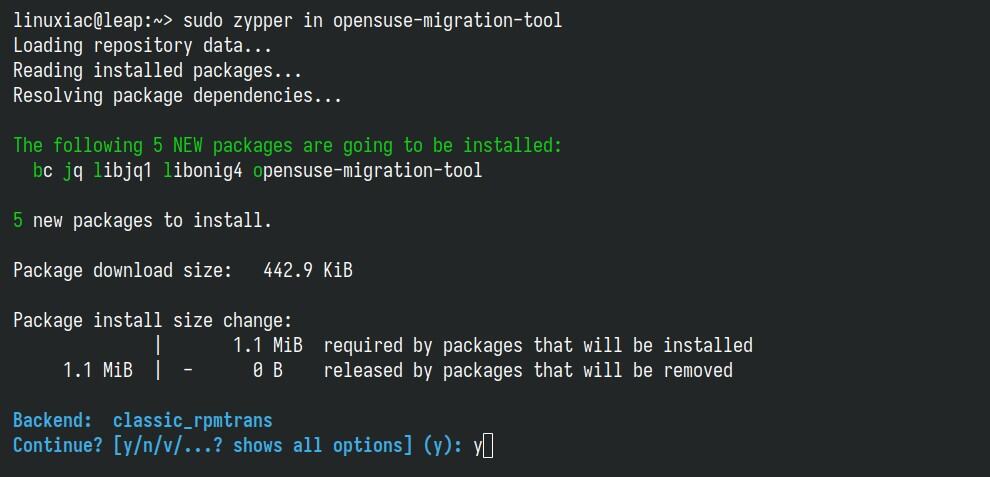
Step 4: Upgrade to openSUSE Leap 16 from Leap 15.6
Now that everything is in place, let’s begin the upgrade process to Leap 16. Open the terminal and execute:
sudo opensuse-migration-toolCode language: Bash (bash)You will be welcomed by a menu-based interface that will guide you through the upgrade. Just pick the option you want—in this case, choose “openSUSE Leap 16.0” from the list.
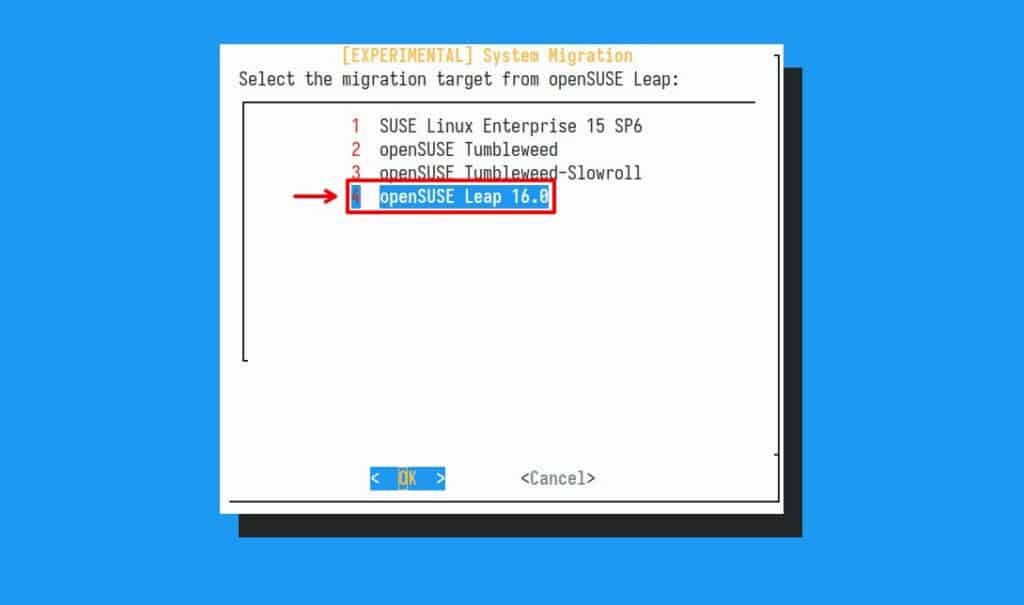
On the next screen, you’ll see a list of third-party repositories that should be disabled. My advice? Just stick with the ones that are already marked by default. Unless you’ve got a really solid reason to keep any of the Leap 15.6 repositories enabled, it’s best not to — otherwise, you might run into issues during the upgrade.
So, simply leave the default ones selected and click “OK” to move on.
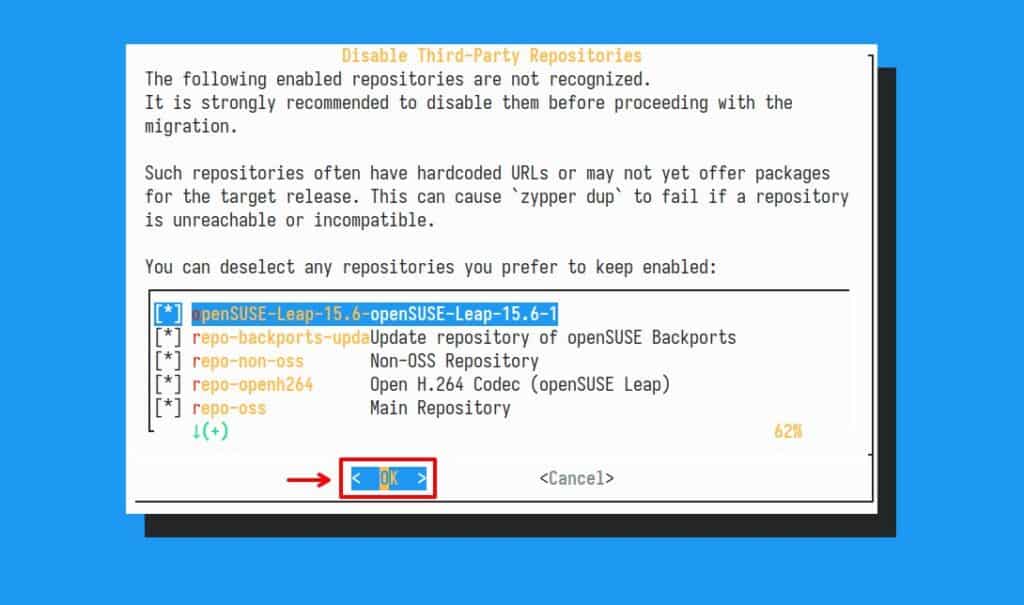
The system will now automatically start downloading and installing all updates. Since this typically involves several gigabytes of data, it may take some time. Please be patient and keep an eye on the process. The duration depends on both your internet speed and your computer’s hardware.
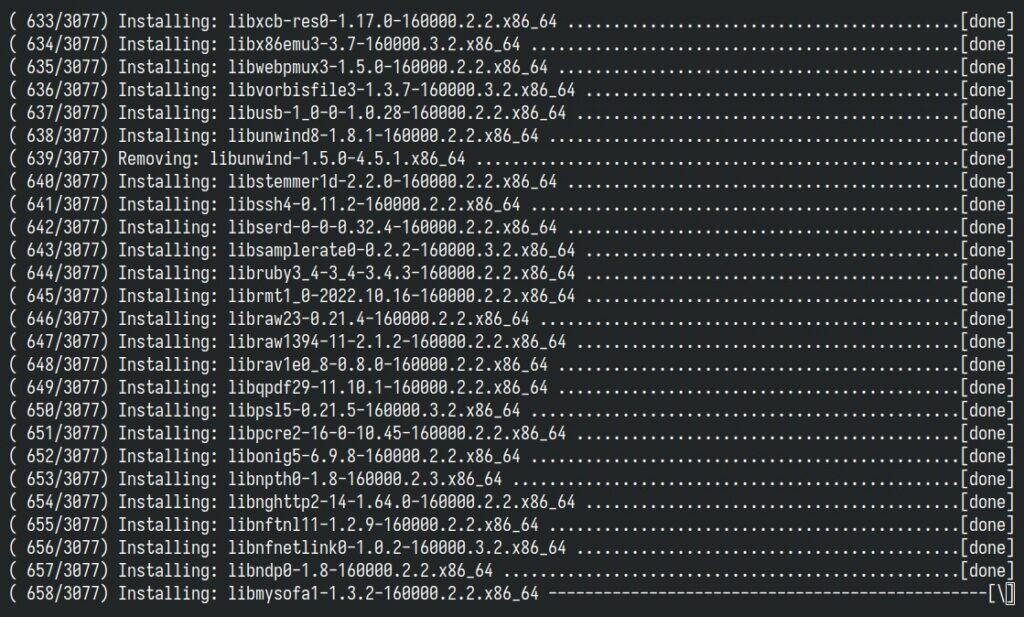
Once everything is complete, reboot the system.
sudo rebootCode language: Bash (bash)And that’s all. Your system has been successfully upgraded from Leap 15.6 to Leap 16. Log in, and enjoy your new openSUSE system.
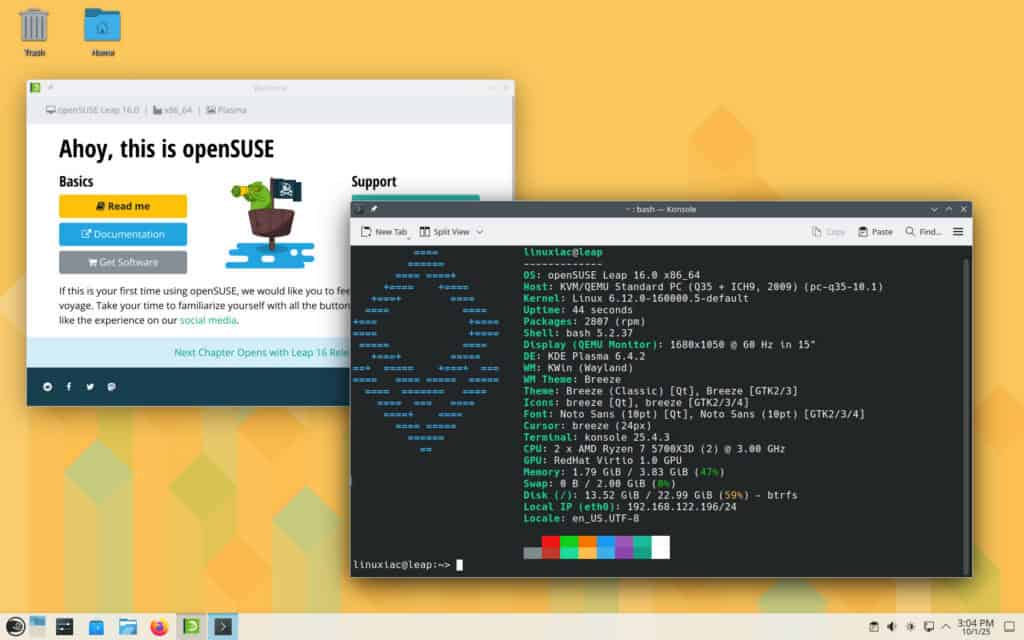
Conclusion
As you can see, upgrading from openSUSE Leap 15.6 to Leap 16 is straightforward when you follow the right steps. Once the upgrade is complete, verify that all services are running correctly and that your applications are functioning as expected.
I made this guide as simple as possible. Thanks for taking the time to read it and for using it. As always, your comments are most welcome.
For additional help, check the official openSUSE upgrade documentation.

Going through “dry run” with migration tool requests some kind of registration number that I have no idea of what it is.
Do you have any info on it?
tom kosvic
Odd. When I run the opensuse migration tool to upgrade from 15.6 to 16.0 the tool uninstalls App Armor and then says the upgrade is completed. Nothing gets downloaded or installed.
Why am I seeing:
error: Key 70af9e8139db7c82 (SuSE Package Signing Key ) expired on 2024-09-20 03:21:47
while the packages are being installed?
The exact same error except for timezone – mine says 4:21:27. That is the only difference. Even the key is the same. And I am getting it on several packages.
Can we also use plasma discover (like in fedora or neon) to perform the upgrade?
I know it’s safer doing it as mentioned, it’s just out of curiosity! I used to be a SUSE user for many years, but as they kept certain areas neglected – using a GUI for upgrading or insisting on yast, for example – I decided to try other distros and moved on…
They seem to getting back on track! But I just don’t find any info on upgrading with discover…
No, the script changes more then discover or zypper up can do.
very big thnx!!!